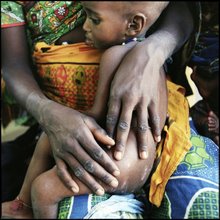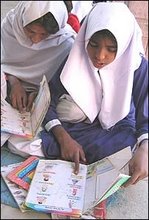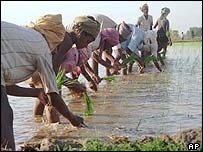PREAMBLE: This is our 3rd annual review of topics that justify an end of year comment. We lead off with praise (“flowers”) and criticism (“fertilizer”) within three categories: global stewardship, international development, and human rights. Then follows a synopsis of each of the monthly blog themes throughout the year.
1. GLOBAL STEWARDSHIP
This issue of Global Perspectives is being constructed during the United Nations Climate Change Conference, Copenhagen, December 2009. Clearly, no national government deserves unqualified recognition for its work to combat climate change; all are conflicted. Instead, we offer “flowers” to the World Wildlife Federation (WWF). WWF is the world’s largest conservation organization, working in 100 countries for half a century. With support from 5 million members, WWF is dedicated to delivering science-based solutions to preserve the diversity and abundance of life on Earth, to stop the degradation of the environment and to combat climate change. For more, visit www.worldwildlife.org. The WWF Climate Savers program was established in 1999 as a voluntary partnership. It has been a trend-setter in demonstrating that reducing corporate carbon emissions makes business sense and should be at the core of business strategy.
By stark contrast, we allocate “fertilizer” to the Conservative Government of Canada. Once host to the conference that led to the 1987 Montreal Protocol on Substances That Deplete the Ozone Layer, and an early advocate of the Kyoto Accords, Canada has emerged as the worst performer among G8 countries. The current Conservative government of Stephen Harper in particular has dragged its feet at every turn, showing no genuine leadership. Only when President Obama announced he would attend at Copenhagen, among other real leaders, did Harper decide to attend; this is not leadership.
2. INTERNATIONAL DEVELOPMENT
To receive our virtual bouquet of “flowers”, we select Mr Lula da Silva, President of Brazil. A former shoe-shine boy and factory worker with a grade 5 education, “Lula”, the popular 2-term president has presided over significant growth in the economy that has solidified the country as the center of gravity in Latin America and an increasingly important player in the world. Mr da Silva has demonstrated sound economic stewardship and political diplomacy. He has fostered Brazil's growth through a centrist combination of respect for financial markets and targeted social programs, which have lifted millions out of poverty and narrowed the yawning income gap between rich and poor. He has demonstrated clearly what third world countries can do for themselves, especially if they can avoid the clutches of the development industry.
References:
1. New York Times, December 8, 2009. http://topics.nytimes.com/topics/reference/timestopics/people/d/luiz_inacio_lula_da_silva/index.html
2. A Comparative Perspective on Poverty Reduction in Brazil, China and India. Martin Ravallion, The World Bank Development Research Group - Director’s Office
Policy Research Working Paper 5080 - October 2009 WPS5080
Available online as PDF file [38p.] at: http://www-wds.worldbank.org/external/default/WDSContentServer/WDSP/IB/2009/10/15/000158349_20091015114049/Rendered/PDF/WPS5080.pdf
Turning now to the case for “fertilizer”, we readily select the most powerful and wealthy developed countries: the G7. For 2008 (most recent data available), the OECD noted that aid was at its highest level ever in dollar terms, increasing over 10% from 2007 in real terms. However, as high as it was, this was only at 0.3% of GNI, compared to the 0.7% target set 35 years ago, a target that continues to be renewed but never met!). In other words, with aid at almost $120 billion, it is still short by some $260 billion (2007 prices).
Moreover, development assistance is often of dubious quality. In many cases:
• Aid is primarily designed to serve the strategic and economic interests of the donor countries;
• Or [aid is primarily designed] to benefit powerful domestic interest groups;
• Aid systems based on the interests of donors instead of the needs of recipients’ make development assistance inefficient;
• Too little aid reaches countries that most desperately need it; and,
• All too often, aid is wasted on overpriced goods and services from donor countries.
Source: Anup Shah. US and Foreign Aid Assistance. April 13, 2009.
http://www.globalissues.org/article/35/us-and-foreign-aid-assistance
3. HUMAN RIGHTS
By way of “flowers” we offer a bouquet to the Geneva Conventions (see column at right for: Geneva Conventions 101 What we thought we knew, or at least should have known, but perhaps were afraid to ask?). These are the time honored central reference point for human rights, but abused by many countries engaged in current conflicts. There are many recent examples: Israel’s military abuse of civilians in Lebanon and Gaza, to Canada’s willful blindness over detainee transfers to Afghan prisons where they are tortured and even lost to follow-up. Other human rights abuses also concern the wellbeing and future of humanity: Mugabe’s Zimbabwe and its organized rape of opposition women as a political tool, Iran’s violent suppression of civil liberties, Chinese oppression of the Uyghurs, genocide in the Sudan, and the maltreatment of indigenous minorities the world over.
An ample truckload of “fertilizer” is required for the Catholic Church as a perpetrator of child sexual abuse by its own clergy, which it has too often sought to cover up in many countries. While not alone among organized religion in this pattern of abuse, any claim for leadership among the world Christian community is jeopardized by this hypocrisy.
We will give space to these issues in the 2010 series. Now onto the review of 2009!
2009 AS WE RECORDED IT.
January: INTERNATIONAL & GLOBAL DEVELOPMENT – YEAR IN REVIEW 2008
Our 2nd annual review was offered at the beginning of New Year 2009 because we reserved our December 2008 issue to celebrate the 5th anniversary of Pacific Health & Development Sciences (PacificSci), incorporated December 8 2004.
February: CLIMATE CHANGE & THE EXPANDING GLOBAL REACH OF DENGUE FEVER
Since the late 1970s dengue fever reemerged in the Caribbean basin, and is now endemic. Because this involves co-circulation of 3 serotypes, the threat to public health has heightened as primary infection does not immunize against infection from other strains: it sets up a complex immune response that may result in serious disease e.g, dengue hemorrhage fever and dengue shock syndrome. Also, climate change has extended the range of mosquito vectors and the length of the breeding season.
Although warnings about this increasing threat are longstanding, concerns about adverse impacts on tourism have contributed to insufficient public recognition and response by politicians. This is unfortunate as the disease in the meantime is becoming more firmly established. Unfortunately, some governments are more prone to spend money on trappings of power e.g, executive helicopters, than on public health e.g., drainage ditches.
However, despite the risk to visitors, the major risk of dengue is for the people of affected countries living in mosquito infested areas. The adequacy of health care systems in many instances is insufficient to cope with epidemic surges; clearly the appropriate response is to refocus on prevention. Dengue Fever falls within a group of “Neglected tropical diseases” (NTDs) that can result in lifelong disabilities and death, as well as stigma, discrimination and poverty. Affected populations often do not have access to treatment and preventive measures, and research and development has been insufficient. In recent years, there is growing attention to NTDs as both a public health and human rights issue.
For more information: A Human Rights Approach to Neglected Tropical Diseases. http://www.who.int/hhr/activities/NTD%20information%20sheet%20-%20English.pdf
March: LEADERSHIP AND MANAGEMENT OF HEALTH ORGANIZATIONS – 7 QUESTIONS
Given the role of poorly prepared leaders and managers in the global financial crisis, we proposed that that a similar crisis develop in health organizations. As a “backgrounder” we extracted from a Globe and Mail opinion piece, in which Henry Mintzberg, McGill University, took aim at “America’s monumental failure of management”. His focus on the global financial crisis and the contribution of US management teaching, including that of Harvard University, stimulated our interest in reflecting on current approaches to health leadership and management and the potential for similar failures. Among the concerns we expressed, is that the current fashion of promoting leadership studies among health professionals early in their career development may be at the cost of first building their management skills; if so, this will eventually adversely impact the managerial competence of their organizations. To explore the issues, we posed 7 questions, then attempted to answer them. The questions follow, but readers now interested in our answers will have to visit our March issue!
The Seven Questions:
1. Like GM, are some health care organizations now “too big to fail”?
2. Is too much emphasis now being given to “leadership” training for health organizations at the expense of basic management skills?
3. Noting a trend towards recruiting CEOs for large health organizations from outside the health system, based on their success in unrelated fields e.g, food, energy, tourism, are such CEOs adequately prepared for the health context?
4. Do such CEOs give enough philosophical commitment (comparable to that of the health professionals they lead) to health goals and objectives?
5. With such CEOs is there a greater risk of remote leadership with an easy exit out of health in the event of failure?
6. Are “leaders” of health organizations receiving disproportionate compensation, driven more by the size of their operating budgets than consistency with evidence of efficacy and positive outcomes, while extolling teamwork and sustainability?
7. Do teachers of health leadership and management in tertiary education institutions have sufficient health leadership and management experience to relate their teaching to reality?
April 2009: GLOBAL ECONOMIC CRISIS AND THE MILLENNIUM DEVELOPMENT GOALS
For this issue we selected a recent UN News Release that addressed global consequences of the greed and corruption in the financial industry. While almost all people have been affected by the economic crisis, the World Bank states that the crisis is set to drive 53 million more people into poverty in 2009, seriously threatening the prospect of achieving the Millennium Development Goals.
May: INDIGENOUS PEOPLE'S GLOBAL SUMMIT ON CLIMATE CHANGE
Indigenous peoples from 80 nations gathered for The Indigenous Peoples' Global Summit on Climate Change in Anchorage, Alaska, April 20-24, 2009. “Leading the Way,” organized by the Inuit Circumpolar Council (ICC), an international organization representing Arctic Inuit nations, convened some 400 participants to exchange ideas and set strategies for responding to global warming. The Summit was designed to help strengthen communities’ participation in and articulate recommendations to the December UN conference in Copenhagen. The Summit concluded Friday, April 24 with the signing of the Anchorage Declaration and action plan. Highlights were posted.
June: ACTING ON CLIMATE CHANGE TO PROTECT HUMAN HEALTH
Following on from our May issue, for this issue we donated our space to dissemination of another statement on climate change, this time from the UK-based Climate and Health Council whose message is that ‘Climate Change is the biggest global health threat of the 21st century’. This message is part of a campaign to elicit support for action from the global health community, leading up to the United Nations Climate Change Conference (COP15) in Copenhagen, December 7-18, 2009. As the editors of the British Medical Journal and Lancet have stated, as co-chairs of the Climate and Health Council: “Over the coming months it is crucial that all those involved in the negotiations are made aware of this campaign, of the growing body of health professional consensus, and of the importance of the message.” They appeal for a broader-based communication strategy, and Pacific Health & Development Sciences Inc. is pleased to add its voice to this effort.
July: FAMILY PLANNING & REPRODUCTIVE HEALTH FALL OFF GLOBAL DEVELOPMENT RADAR
During the second half of the 20th century, world population more than doubled to reach 6 billion, an astonishing 3 billion increase in population in just 40 years. Although this rate has slowed to 1.2% a year, an additional 75 million people are being added every year this decade. The world’s population could reach 9 billion by 2050, with the majority likely to live in the world’s poorest countries.
On the eve of the 20th anniversary of World Population Day, the World Bank and the United Nations Population Fund (UNFPA) warned that family planning and other reproductive health programs had fallen off the development radar of many low-income and donor country governments and international aid agencies.
World Bank figures show that while official global development aid for health soared from US $2.9 billion in 1995 to US $14.1 billion in 2007, a 5-fold increase in 12 years, aid for population and reproductive health increased much more modestly during the same period, from $901 million in 1995 to $1.9 billion in 2007. In the 35 highest-fertility countries in Africa, Asia, and the Middle East, aid for family planning and reproductive programs started at $150 million in 1995 and increased to $432 million in 2007, while overall aid for health in these 35 countries went from $915 million in 1995 to $4.9 billion in 2007. Support for population and reproductive health programs has significantly declined as a percentage of overall health aid, from about 30% in 1994 to 12% in 2008.
Said Joy Phumaphi, Vice President for Human Development at the World Bank, ”The global economic downturn has taken a wrecking ball to growth and development in poor countries worldwide, and has become a development emergency …”
August: THE GLOBAL ECONOMIC, HEALTH & SOCIAL IMPACTS OF AGEING POPULATIONS
On June 25, 2009, the Economist published a special report on ageing populations, drawing from recently released estimates from the International Monetary Fund (IMF). We selected this topic because of its importance world-wide, and also because – in our teaching, publishing and advisory roles – we (among others active in population health sciences) have been stressing the relevance and impact of ageing to the health of populations for over two decades. We are therefore pleased that attention is finally being given to these demographic forces and effects by established media sources such as the Economist. Their ability to present the phenomenon in common (non-technical) language, placing it in the perspective of the global financial crisis (that affects everyone), and then highlighting what the future may hold, should be a wake-up call to governments around the world: to come to grips with the policy and fiscal implications. We reflect on some key points, and refer interested readers to the complete article which includes several charts to illustrate the main observations (see issue for details).
September: U.N. RELEASES MILLENNIUM DEVELOPMENT GOALS 2009 REPORTS
In September 2000, the Millennium Declaration set 2015 as the target date for achieving most of the Millennium Development Goals (MDGs), which established quantitative benchmarks to halve extreme poverty in all its forms. More than halfway to this target date, major advances in the fight against poverty and hunger have begun to slow or even reverse as a result of the global economic and food crises. A UN assessment warns that, despite successes, overall progress has been too slow for most of the targets to be met by 2015. Progress towards the goals is now threatened by sluggish or even negative economic growth, diminished resources, fewer trade opportunities for the developing countries, and reductions in aid flows from donor nations.
October: DRAWING ATTENTION TO A GLOBAL PANDEMIC - Diarrhoeal Disease
Diarrhoea remains the 2nd leading cause of death among children under five globally, surpassed only by pneumonia, the most common cause. Nearly 1 in 5 child deaths (about 1.5 million each year) is due to diarrhoea. It kills more young children than AIDS, malaria and measles combined. We draw attention to a recent joint report from UNICEF and WHO that addresses this pandemic. Diarrhoeal disease, no longer a scourge in developed countries, attracts comparatively little attention from the international donor community, when compared with conditions such as HIV/AIDS, TB and malaria. Today, the media spotlight has shifted to H1N1 influenza, with little sense of proportionality in terms of continuing real disease burdens globally.
November DESERTIFICATION, FOOD SECURITY & CLIMATE
In this issue we feature the commentary of Max Ajl in Daily Climate News and Analysis. October 20, 2009 (reference supplied). The topic is critical to survival of our planet, and Ajl’s grasp of the issues is transparent. He cites conclusions from an October 2009 UN conference on desertification, which offers warnings and solutions. For example, dryland populations are already some of the planet’s most vulnerable: about 90% of such populations are in developing countries, and infant mortality rates in dryland areas are among the highest. However, he is optimistic that the process of desertification may be fixable: example - in a northern province of Argentina, a team of soil experts worked with native plant species to restore the micro-region’s bio-diversity and soil quality through a slow, deliberate process of re-vegetation. The plants are still growing and the project is still on-going, and it appears that the process of degradation has been stopped, at least for the time being. Relevant to the global search for carbon capture methods, he notes that dry land soils are nowhere close to carbon saturated and may have enormous potential for carbon sequestration. He concludes by emphasizing the primary need to ensure that cultivation techniques are ecologically appropriate: to prevent desertification it before it starts.
December: INTERNATIONAL & GLOBAL DEVELOPMENT – YEAR IN REVIEW 2008…
This Issue!
AND A HAPPY NEW YEAR!
We extend to readers our best wishes for 2010, with hopes that the global challenges of recent years will be better understood and more humanely managed going forward. For this to happen we need more enlightened world leadership. In the public interest, PacificSci will continue to offer an independent view.
FROM a Great Canadian and World Statesman
"A great gulf... has... opened between man's material advance and his social and moral progress, a gulf in which he may one day be lost if it is not closed or narrowed..."
Lester B Pearson
http://nobelprize.org/nobel_prizes/peace/laureates/1957/pearson-lecture.html
INSPIRATIONAL WELCOME ............................... from T.S.Eliot's "Little Gidding"
If you came this way From the place you would come from... It would be the same at the end of the journey...
If you came, not knowing what you came for, It would be the same... And what you thought you came for Is only a shell, a husk of meaning... From which the purpose breaks only when it is fulfilled If at all.


























